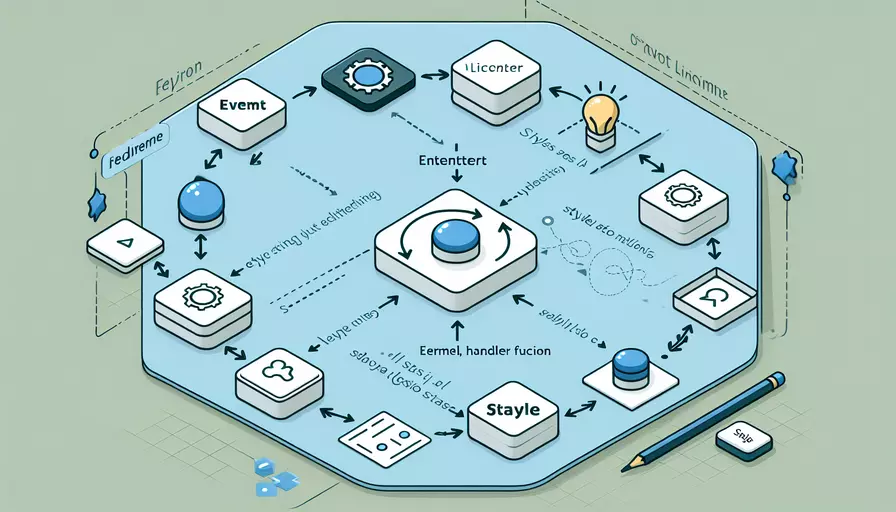
在Vue中更换样式的方法主要有以下几种:1、使用条件绑定class或style;2、使用计算属性动态生成class或style;3、使用事件监听器改变数据,从而改变样式。 这些方法可以帮助你根据用户的交互行为动态地改变组件的样式,使得应用更加灵活和互动。
一、使用条件绑定class或style
在Vue中,你可以通过v-bind:class或v-bind:style指令来根据条件绑定样式。这些指令允许你动态地应用CSS类或内联样式。
<template>
<div :class="{ active: isActive }" @click="toggleActive">
点击我更换样式
</div>
</template>
<script>
export default {
data() {
return {
isActive: false
};
},
methods: {
toggleActive() {
this.isActive = !this.isActive;
}
}
};
</script>
<style>
.active {
background-color: green;
color: white;
}
</style>
在上述示例中,当用户点击div时,isActive的值会在true和false之间切换,从而改变div的样式。
二、使用计算属性动态生成class或style
你还可以使用计算属性来生成需要绑定的类或样式,这样可以使代码更清晰、更具可维护性。
<template>
<div :class="computedClass" @click="toggleActive">
点击我更换样式
</div>
</template>
<script>
export default {
data() {
return {
isActive: false
};
},
computed: {
computedClass() {
return this.isActive ? 'active' : '';
}
},
methods: {
toggleActive() {
this.isActive = !this.isActive;
}
}
};
</script>
<style>
.active {
background-color: blue;
color: white;
}
</style>
在这个示例中,computedClass计算属性根据isActive的值返回相应的类名。
三、使用事件监听器改变数据,从而改变样式
你可以通过事件监听器来改变组件数据,然后通过数据绑定来实现样式的更换。
<template>
<div :style="computedStyle" @click="toggleStyle">
点击我更换样式
</div>
</template>
<script>
export default {
data() {
return {
isActive: false
};
},
computed: {
computedStyle() {
return {
backgroundColor: this.isActive ? 'red' : 'yellow',
color: this.isActive ? 'white' : 'black'
};
}
},
methods: {
toggleStyle() {
this.isActive = !this.isActive;
}
}
};
</script>
在这个示例中,computedStyle计算属性根据isActive的值返回不同的内联样式。
四、实例说明和原因分析
以上方法在实际开发中均有广泛应用,选择哪种方法取决于具体的需求和代码风格。
- 条件绑定class或style:这种方法简单直接,适用于样式变化较为简单的情况。
- 计算属性动态生成class或style:通过计算属性生成样式使得代码更加清晰和可维护,尤其适合复杂的样式逻辑。
- 事件监听器改变数据:这种方法将逻辑和样式分开,通过数据驱动样式变化,符合Vue的响应式编程理念。
这些方法均利用了Vue的响应式数据绑定特性,通过绑定数据和样式,实现样式的动态更换。无论选择哪种方法,都需要根据具体情况进行权衡和选择。
总结和进一步建议
在Vue中更换样式有多种方法,主要包括条件绑定class或style、使用计算属性动态生成class或style,以及通过事件监听器改变数据。选择具体方法时,应根据需求和代码的复杂度进行选择。建议在项目初期就确定好样式管理的策略,这样可以使项目的代码更加整洁和可维护。此外,可以考虑使用CSS预处理器(如Sass或Less)和CSS模块化工具(如CSS Modules)进一步优化样式管理。通过这些手段,你可以更好地控制和管理应用中的样式变化。
相关问答FAQs:
1. 如何在Vue中实现点击更换样式?
在Vue中,可以通过绑定样式的方式实现点击更换样式。首先,在Vue的模板中定义一个用于展示样式的元素,然后使用Vue的指令v-bind:class来绑定样式的类名。当点击事件触发时,可以通过修改数据的方式来改变绑定的类名,从而实现样式的更换。
以下是一个示例代码:
<template>
<div>
<div :class="currentStyle" @click="changeStyle">点击我切换样式</div>
</div>
</template>
<script>
export default {
data() {
return {
currentStyle: 'default-style' // 默认样式
}
},
methods: {
changeStyle() {
if (this.currentStyle === 'default-style') {
this.currentStyle = 'new-style' // 切换到新样式
} else {
this.currentStyle = 'default-style' // 切换回默认样式
}
}
}
}
</script>
<style>
.default-style {
background-color: #f0f0f0;
color: #333;
}
.new-style {
background-color: #333;
color: #fff;
}
</style>
在上面的示例中,当点击"点击我切换样式"的元素时,会触发changeStyle方法,该方法会根据当前的样式来切换到另一种样式。currentStyle的值会根据当前的样式来动态绑定到元素的class属性上,从而实现样式的更换。
2. 如何使用Vue的动态样式绑定实现点击更换样式?
Vue提供了动态样式绑定的特性,可以通过绑定一个对象来实现样式的动态更换。首先,在Vue的模板中定义一个用于展示样式的元素,然后使用Vue的指令v-bind:style来绑定样式对象。当点击事件触发时,可以通过修改样式对象的属性值来改变样式,从而实现样式的更换。
以下是一个示例代码:
<template>
<div>
<div :style="currentStyle" @click="changeStyle">点击我切换样式</div>
</div>
</template>
<script>
export default {
data() {
return {
currentStyle: {
backgroundColor: '#f0f0f0',
color: '#333'
} // 默认样式
}
},
methods: {
changeStyle() {
if (this.currentStyle.backgroundColor === '#f0f0f0') {
this.currentStyle.backgroundColor = '#333' // 切换到新的背景颜色
this.currentStyle.color = '#fff' // 切换到新的文字颜色
} else {
this.currentStyle.backgroundColor = '#f0f0f0' // 切换回默认背景颜色
this.currentStyle.color = '#333' // 切换回默认文字颜色
}
}
}
}
</script>
在上面的示例中,当点击"点击我切换样式"的元素时,会触发changeStyle方法,该方法会根据当前的样式来切换到另一种样式。currentStyle是一个样式对象,它的属性值会根据当前的样式来动态绑定到元素的style属性上,从而实现样式的更换。
3. 如何使用Vue的计算属性实现点击更换样式?
Vue的计算属性是一种能够根据依赖关系自动更新的属性,可以通过计算属性来实现点击更换样式的功能。首先,在Vue的模板中定义一个用于展示样式的元素,然后使用计算属性来动态计算样式对象。当点击事件触发时,可以通过修改计算属性的依赖数据来改变样式,从而实现样式的更换。
以下是一个示例代码:
<template>
<div>
<div :style="currentStyle" @click="changeStyle">点击我切换样式</div>
</div>
</template>
<script>
export default {
data() {
return {
isDefaultStyle: true // 默认样式
}
},
computed: {
currentStyle() {
if (this.isDefaultStyle) {
return {
backgroundColor: '#f0f0f0',
color: '#333'
}
} else {
return {
backgroundColor: '#333',
color: '#fff'
}
}
}
},
methods: {
changeStyle() {
this.isDefaultStyle = !this.isDefaultStyle // 切换样式的状态
}
}
}
</script>
在上面的示例中,当点击"点击我切换样式"的元素时,会触发changeStyle方法,该方法会修改isDefaultStyle的值,从而切换样式的状态。计算属性currentStyle会根据isDefaultStyle的值来动态计算样式对象,然后将样式对象绑定到元素的style属性上,从而实现样式的更换。
文章标题:vue中如何点击更换style,发布者:飞飞,转载请注明出处:https://worktile.com/kb/p/3655922

 微信扫一扫
微信扫一扫  支付宝扫一扫
支付宝扫一扫 